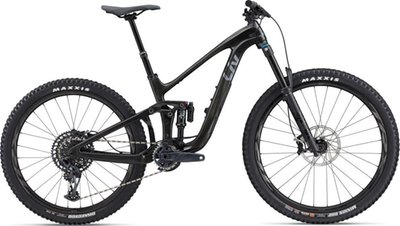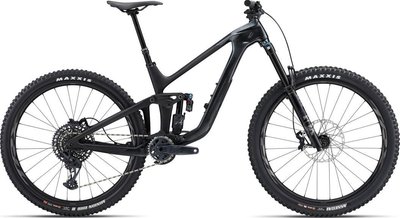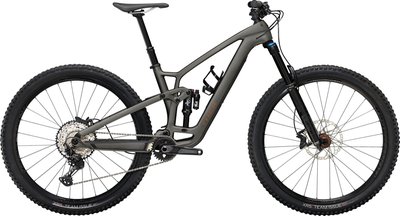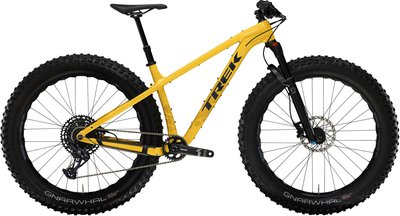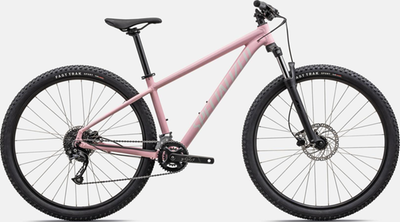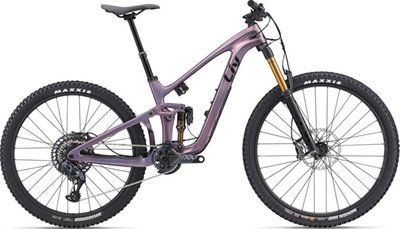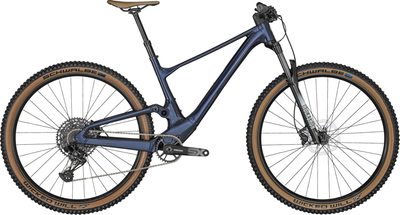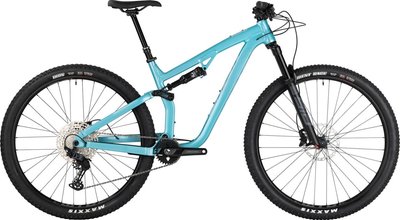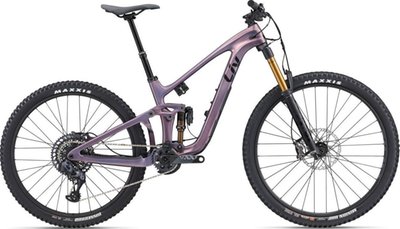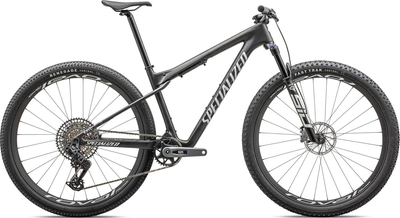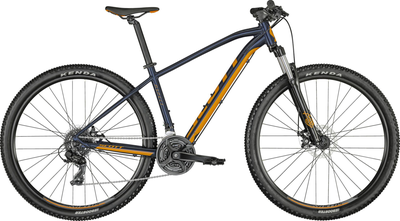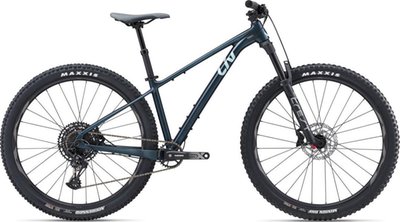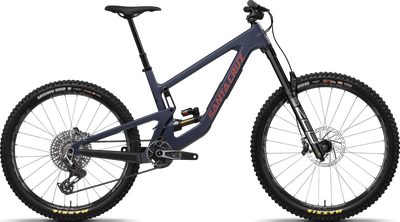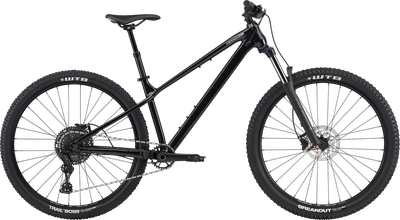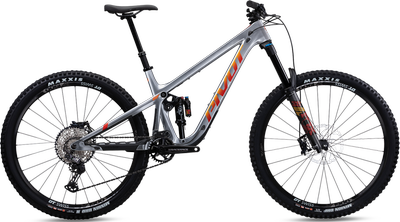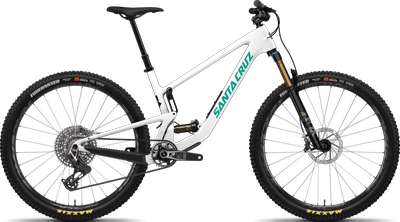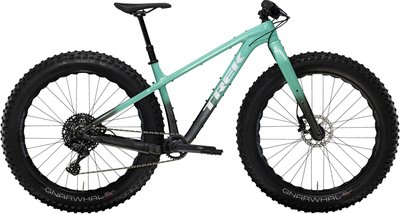Mountain Bikes of the 2023 Season
116 Results
The Ultimate Guide to Buying a Mountain Bike in 2023
When it comes to choosing the best mountain bike in 2023, the options can feel endless. With advancements in design, materials, and technology, the market is buzzing with brands and manufacturers competing to give you the ultimate riding experience. But how do you pick the right bike for your needs? In this guide, we’ll break down the essentials to help you make an informed decision, whether you're new to mountain biking or looking to upgrade your current setup.
Why Invest in a Quality Mountain Bike?
If you're serious about hitting the trails, investing in a quality mountain bike can transform your experience. Brands like Trek, Specialized, and Giant are pushing boundaries with bikes that offer improved suspension, frame durability, and versatility. A well-built mountain bike can take you over rocky terrains, steep inclines, and smooth descents, all while keeping you comfortable and in control.
Factors to Consider in a Mountain Bike
Before we dive into specific categories, let’s touch on the main factors to consider when picking your 2023 mountain bike.
Terrain Compatibility: Think about where you’ll be riding most often. Will you hit rugged mountain trails, smooth forest paths, or park trails? Different terrains require different types of bikes.
Suspension Type: There are two main types – hardtail (front suspension only) and full suspension. Each offers unique benefits depending on the kind of trails you’ll be riding.
Frame Material: Aluminum is durable and affordable, while carbon fiber is lightweight and offers a bit more responsiveness. Some high-end bikes even use titanium, though it's pricey.
Wheel Size: Most mountain bikes today come in either 27.5-inch or 29-inch wheels. Each has pros and cons for different styles of riding, with the 29er wheels being popular for covering more ground.
Budget: Finally, budget is a huge factor. Quality bikes can range from a few hundred to several thousand dollars, so knowing what you want to spend upfront can narrow your options.
Choosing the Right Type of Mountain Bike
Mountain bikes aren’t one-size-fits-all, and each type is built for a specific style of riding. Let’s explore the main categories to find what might suit you best.
Trail Bikes
Trail bikes are probably the most popular style, especially for all-around mountain biking. They’re versatile, typically equipped with moderate suspension (120-150mm), and can handle various terrains. Brands like Santa Cruz, Trek, and Specialized dominate this category, offering models that balance durability, weight, and handling. If you want a bike that can handle climbing, descending, and technical trails, a trail bike is an excellent choice.
Cross-Country (XC) Bikes
If speed and distance are your top priorities, an XC bike might be the way to go. Cross-country bikes are lightweight, making them ideal for long rides and steep climbs. XC bikes usually come with less suspension (around 80-100mm), which keeps them nimble. Specialized, Giant, and Cannondale are some top brands that offer excellent XC options in 2023.
Enduro Bikes
For those who love tackling downhill courses and steep descents, an enduro bike is built to withstand the toughest trails. Enduro bikes come with beefier suspension (usually 150-180mm), giving you extra cushion and control on rough terrain. Expect a bit more weight with these bikes, but the payoff is in stability and shock absorption. Enduro bikes are popular among experienced riders who like challenging rides, and brands like Yeti, Rocky Mountain, and Norco are leaders in this area.
Downhill Bikes
Downhill bikes are purpose-built for, you guessed it, downhill riding. These bikes are specialized for steep, aggressive trails and can handle big drops and fast descents. They’re usually heavier and feature full suspension with high travel (often 200mm+). If you're hitting a mountain resort or downhill trails regularly, brands like Kona and Scott offer some excellent downhill-specific models in 2023.
Key Features and Tech Trends in 2023
The mountain biking industry is always evolving, with each new year bringing fresh innovations. Let’s check out some of the latest trends and tech to look for in 2023.
Electronic Shifting: More high-end bikes are equipped with electronic shifting, allowing for precise and fast gear changes. Shimano and SRAM are the leading companies developing electronic drivetrains.
Dropper Seat Posts: Almost a standard feature now, dropper posts allow you to adjust your seat height on the fly. This is especially useful for steep descents or technical sections.
Tubeless Tires: Tubeless setups are great because they’re less likely to puncture, offer better traction, and allow you to run lower tire pressures. Most high-quality bikes now come tubeless-ready.
Carbon Fiber Frames: While aluminum is still widely used, many higher-end bikes now use carbon fiber frames for their lightweight and durability.
Increased Adjustability: Some 2023 mountain bikes offer adjustable geometry. This feature allows you to tweak the bike’s setup for different trails, making it more versatile.
Finding the Right Brand
Choosing a reliable brand can make a huge difference in performance and durability. Let’s look at some of the top brands known for quality mountain bikes.
Specialized: Known for innovation, Specialized offers a range of bikes from entry-level to high-performance models. They’re also one of the few brands with a broad selection across all mountain bike types.
Trek: Another top player, Trek is known for its cutting-edge technology and durable bikes. They offer a wide range of mountain bikes for different types of trails and skill levels.
Giant: As one of the world’s largest bike manufacturers, Giant produces high-quality bikes with excellent value for money. They offer a range of mountain bikes, including some of the best XC and trail bikes.
Cannondale: Cannondale is known for its lightweight frames and innovative designs. If you’re looking for a high-performance XC bike, Cannondale is a strong contender.
Santa Cruz: Loved by many for their premium quality and excellent suspension, Santa Cruz focuses heavily on trail and enduro bikes.
Budgeting for Your Mountain Bike
Mountain bikes can range significantly in price, from under $1,000 to over $10,000. Here’s a rough guide to help you set a budget:
Entry-Level ($500 - $1,500): Entry-level bikes typically come with basic components and less advanced materials, making them best for beginners.
Mid-Range ($1,500 - $3,000): Mid-range bikes offer better components, lighter frames, and sometimes even full suspension. These are great for riders who plan to hit a variety of trails.
High-End ($3,000+): High-end mountain bikes use top-of-the-line components, often carbon fiber frames, and advanced suspension systems. These are best suited for serious riders who want peak performance.
Maintenance Tips for Your Mountain Bike
To keep your bike in top shape, regular maintenance is key. Here are some basic tips to follow:
Clean Your Bike Regularly: After a muddy or dusty ride, wipe down your bike to prevent dirt buildup.
Check Your Brakes: Make sure your brake pads aren’t worn and that they’re functioning correctly.
Inspect Tires and Suspension: Check for tire pressure and any wear on your suspension, especially if you ride rough trails often.
Lubricate the Chain: A well-lubricated chain keeps your bike running smoothly.
FAQ
1. What is the best mountain bike for beginners?
Trail bikes are usually the best choice for beginners because they offer a good balance between handling and versatility. Brands like Trek, Giant, and Specialized have affordable models to get you started.
2. Should I choose a hardtail or full suspension bike?
Hardtail bikes are typically lighter and less expensive, making them great for cross-country and less technical trails. Full suspension bikes are better for rough terrains and downhill rides due to their extra shock absorption.
3. How often should I service my mountain bike?
It’s best to give your bike a basic check-up after each ride, especially if you've been on muddy or rough trails. For a more thorough service, aim for every 3-6 months, depending on usage.
4. Are carbon frames worth it?
Carbon frames are lighter and often offer better vibration absorption, but they’re more expensive. If you’re a serious rider or want a high-performance bike, a carbon frame could be a good investment.
5. What is the ideal wheel size for mountain biking?
Wheel size depends on your riding style. 27.5-inch wheels are generally more agile, while 29-inch wheels are better for covering long distances.

